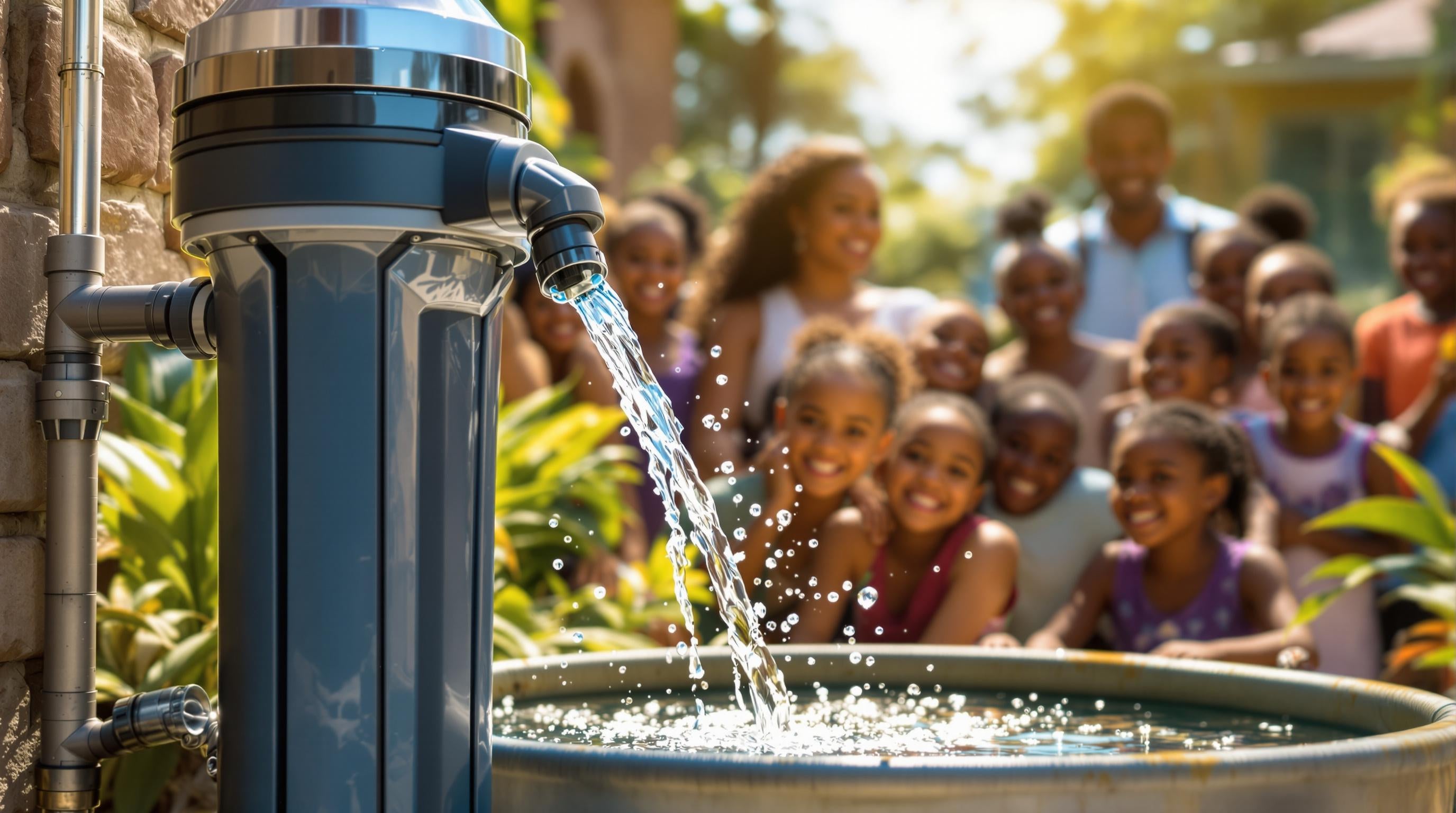Poor water quality in the U.S. leads to increased healthcare costs, lost productivity, and economic strain. Contaminated water causes illnesses like gastrointestinal infections, respiratory issues, and complications for vulnerable groups, including children, the elderly, and pregnant women. Aging water infrastructure worsens the problem, exposing communities to pollutants.
Key Points:
- Health Impact: Waterborne illnesses result in emergency visits, hospital stays, and chronic conditions.
- Economic Costs: Medical bills, missed workdays, and productivity losses burden families and businesses.
- Solutions: Investing in water treatment systems reduces health risks, medical expenses, and home maintenance costs.
WATERLUX offers filtration systems ranging from $69 to custom-priced whole-house solutions, ensuring clean water and long-term savings. Testing and maintaining water quality at home can protect your health and save money.
Water Contamination and Health Problems
Major Illnesses from Contaminated Water
Contaminated water can cause a range of health problems. The severity depends on the type and amount of pollutants present. Common issues include gastrointestinal problems, respiratory illnesses, and other systemic health effects. Ongoing studies aim to better understand these connections.
High-Risk Groups
Certain groups are more vulnerable to the effects of contaminated water:
| Population Group | Risk Factors | Common Health Impacts |
|---|---|---|
| Young Children | Developing immune systems; higher water consumption compared to body weight | Developmental delays; digestive issues |
| Elderly (65+) | Weakened immune systems; existing chronic conditions | Greater risk of dehydration and complications from infections |
| Pregnant Women | Increased sensitivity to environmental pollutants | Higher risk of pregnancy complications and effects on fetal health |
| Immunocompromised | Reduced ability to combat infections | More severe or prolonged illnesses |
U.S. Health Impact Data
In the United States, water contamination remains a public health concern. Regional differences in water quality and infrastructure play a role in health outcomes. These issues contribute to notable medical and economic challenges, emphasizing the need for targeted solutions and further research into prevention and mitigation.
The social cost of waterborne viral diseases from bad water ...
Medical and Financial Impact
Waterborne illnesses come with hefty medical bills and reduced workplace productivity. Here's a closer look at the financial toll they take.
Medical Treatment Costs
Dealing with waterborne illnesses often means paying for emergency care, hospital stays, doctor visits, medications, and follow-up treatments. The expenses can skyrocket for severe cases or when complications lead to chronic conditions, requiring ongoing or specialized care.
Work and Productivity Losses
The impact doesn't stop at medical bills. These illnesses also disrupt workplaces. Sick days, reduced efficiency after returning to work, and even missed workdays for caregivers all add up. Together, these factors create a financial strain that's hard to ignore.
Cost Analysis
Investing in clean water systems pays off in the long run. By cutting down on medical treatments and keeping productivity losses in check, effective water quality measures save families and communities from unnecessary expenses over time. This highlights the importance of staying ahead with water quality management.
sbb-itb-38ad72f
Water Treatment Systems and Cost Savings
Investing in water treatment systems can help cut costs by eliminating contaminants and reducing expenses related to health and home maintenance.
Health-Related Savings
Clean, filtered water can lower the frequency of doctor visits and reduce the need for medications. This promotes better workplace attendance and minimizes the financial impact of sick days. Using a whole-house filtration system ensures clean water from every tap, reducing exposure to contaminants and potential medical bills.
Other Financial Advantages
Beyond health savings, water treatment systems can help reduce home maintenance costs. Filtered water prevents mineral buildup and corrosion in appliances, extending their lifespan and cutting down on repair or replacement expenses. Choosing the right system for your specific water needs can maximize these savings.
WATERLUX Product Options

WATERLUX provides a range of filtration systems to meet different water quality requirements:
| System Type | Price Range | Features and Benefits |
|---|---|---|
| Kitchen Faucet Systems | $69–$199 | Filters water at the tap for drinking and cooking |
| Water Filtration Pitchers | $75 | Portable filtration with a pump for convenience |
| Alkaline Water Systems | $1,299–$1,517 | Filters water while balancing pH levels |
| Complete Home Systems | Custom pricing | Filters and softens water for the entire house |
The WATERLUX Alkaline Reverse Osmosis system eliminates contaminants while retaining essential minerals, reducing the need for bottled water. For homes using municipal or well water, WATERLUX complete home systems provide thorough filtration, purification, and water softening. These options ensure safe water and help homeowners save money in the long run.
Steps to Improve Water Quality
Water Safety Rules and Testing
The Environmental Protection Agency (EPA) requires regular testing of public water supplies to ensure safety. For those relying on private wells, it's recommended to test your water at least twice a year to check for potential contaminants.
Home Water Safety Methods
-
Initial Water Assessment
Start with a professional water test. This helps identify contaminants and guides you in choosing the right filtration system for your home. -
System Selection and Installation
Choose a whole-house filtration system that works for all taps. Brands like WATERLUX offer systems that filter out harmful substances while keeping beneficial minerals intact. -
Regular Maintenance
Stick to a maintenance schedule. Replace filters as needed and test your water periodically to ensure the system continues to work effectively.
These steps not only protect your household but also play a role in improving water quality for the entire community.
Community Health Benefits
Using effective water filtration systems at home can lead to healthier communities and lower medical costs. When households combine regular maintenance with advanced water treatment solutions, the long-term benefits include reduced health risks and expenses. WATERLUX offers a range of systems, from basic filtration to advanced alkaline water treatment, ensuring clean water for families while supporting overall community health.
Conclusion
Poor water quality leads to higher healthcare expenses, impacts community well-being, and reduces productivity. It also poses serious long-term health challenges, making it crucial to address water quality issues without delay.
Investing in water filtration systems can help safeguard health while cutting down on medical costs. With initial costs ranging from $69 to $1,299, these systems are a smart choice compared to the potential expenses of healthcare treatments. WATERLUX offers solutions that not only protect individual households but also contribute to healthier communities.
WATERLUX's filtration systems tackle a wide range of water quality issues, from removing common contaminants to providing advanced alkaline water treatment. Their whole-house systems ensure clean water from every tap, promoting healthier living environments and helping families save on healthcare costs. Clean water is key to better health and reduced long-term financial burdens.

